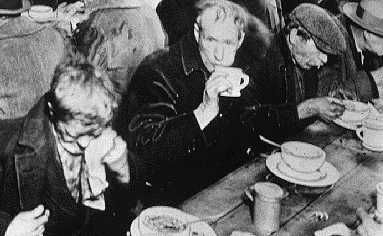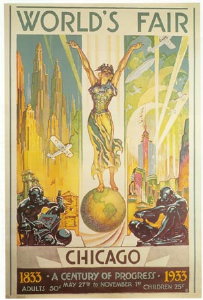The fascination with death extends far back into human history. Throughout time, people have had obsessions with death and all things related to death and the afterlife.
The Victorians are known for their prudish and repressed behavior. But few are aware of their almost fanatical obsession with death. And no one was more fixated than the era's namesake, Queen Victoria, ruler of England from 1837 to 1901. She elaborately mourned the death of her husband, Prince Albert, for 40 years -- dressing in black every day and keeping their home exactly as it was the day he died, said Carol Christ, executive vice chancellor and provost, and expert on Victorian death. [2]
Compared to modern attitudes, our forebears of the Victorian era could be accused of having had a morbid fascination and peculiar obsession with death and dying. The Victorian period from 1837-1901 was an age when customs and practices relating to death were enormously important. The Victorian treatment of death and dying has even been dubbed a "cult of death", evidenced by a profusion of icons and rituals that were contrived to express grief and to honour the recently departed.
[1]

Victorian society dictated stric rules for the observance of rituals related to death and dying. By the 1800's a realtively affluent middles calss had emerged and life expectancy, for most, had improved. The Victorians had reasonable expectations of living to a relatively old age, so death at a young age was generally considered tragic. Percading gloom and grand-scale mourning epitomised death practices in the Victorian era, most particularly after 1861 in Great Britain when the widowed Queen Victoria took grieving to the extreme. After the loss of her husband, the Prince Consort Albert, the Queen went into deep mourning. British subjects followed her lead and death practices became more elaborate.
[1]
Dress Code and Rules:
Mourning periods were regulated, mourning dress was dictated, and funeral and burial arrangements became more extravagant.
Contemporary literature and the arts romanticised death, particularly the "lingering death" that enabled a sufferer the time needed for spiritual readiness for the next life.
For immigrants to colonial Australia in the 19th century, the terrifying prospect of death and burial at sea contradicted Christian ideals of the"good death". Death aboard ship assured a watery grave-the antithesis of the ideal of the Christian burial.
[1]
In the Victorian era,
Australian responses to death and dying evolved from the personal experiences of immigrants in a new and unforgiving environment, and heralded a break from traditional European culture.
Religious tradition was integral to the customs connected with dying and death in the 19th century. Burial and commemoration ceremonies were intimately linked to Christian doctines and the concept of a "good death", which demanded spiritual readiness and yielding to God 's will. With a majority of immigrants to Australia in the 1800's coming from Britain and Ireland traditions associated with death reflected Irish and British culture and Catholic and Protesta doctrine.
[1]
 |
| 'Seductive Death' by E.H.Langlois 1852 |
Bibliography:
[1]: Death and Mourning:
http://www.angelpig.net/victorian/mourning.html
[2]: Berkeleyan, A Victorian Obsession With Death:
http://berkeley.edu/news/berkeleyan/2000/04/05/death.html
Photos are from [1]









 Victorian society dictated stric rules for the observance of rituals related to death and dying. By the 1800's a realtively affluent middles calss had emerged and life expectancy, for most, had improved. The Victorians had reasonable expectations of living to a relatively old age, so death at a young age was generally considered tragic. Percading gloom and grand-scale mourning epitomised death practices in the Victorian era, most particularly after 1861 in Great Britain when the widowed Queen Victoria took grieving to the extreme. After the loss of her husband, the Prince Consort Albert, the Queen went into deep mourning. British subjects followed her lead and death practices became more elaborate. [1]
Victorian society dictated stric rules for the observance of rituals related to death and dying. By the 1800's a realtively affluent middles calss had emerged and life expectancy, for most, had improved. The Victorians had reasonable expectations of living to a relatively old age, so death at a young age was generally considered tragic. Percading gloom and grand-scale mourning epitomised death practices in the Victorian era, most particularly after 1861 in Great Britain when the widowed Queen Victoria took grieving to the extreme. After the loss of her husband, the Prince Consort Albert, the Queen went into deep mourning. British subjects followed her lead and death practices became more elaborate. [1]





 The reason why Harvard University was one of the world-leading academic institution because most of their alumni are famous and well known. Among all the alumni, this guy right here probably everyone will know his name,Barack Obama current President of the United States of America, was also graduated from Harvard Law School.alumni, this guy right here probably everyone will know his name,Barack Obama current President of the United States of America, was also graduated from Harvard Law School.
The reason why Harvard University was one of the world-leading academic institution because most of their alumni are famous and well known. Among all the alumni, this guy right here probably everyone will know his name,Barack Obama current President of the United States of America, was also graduated from Harvard Law School.alumni, this guy right here probably everyone will know his name,Barack Obama current President of the United States of America, was also graduated from Harvard Law School. How can we not talk about the greatest American poet in a poetry blog. Robert Frost, four times Pulitzer Prizes for Poetry winner. He is highly regarded for his realistic depictions of rural life and his command of American colloquial speech. His work frequently employed settings from rural life in New England in the early twentieth century, using them to examine complex social and philosophical themes. He also studied liberal art in Harvard University for two years.
How can we not talk about the greatest American poet in a poetry blog. Robert Frost, four times Pulitzer Prizes for Poetry winner. He is highly regarded for his realistic depictions of rural life and his command of American colloquial speech. His work frequently employed settings from rural life in New England in the early twentieth century, using them to examine complex social and philosophical themes. He also studied liberal art in Harvard University for two years.